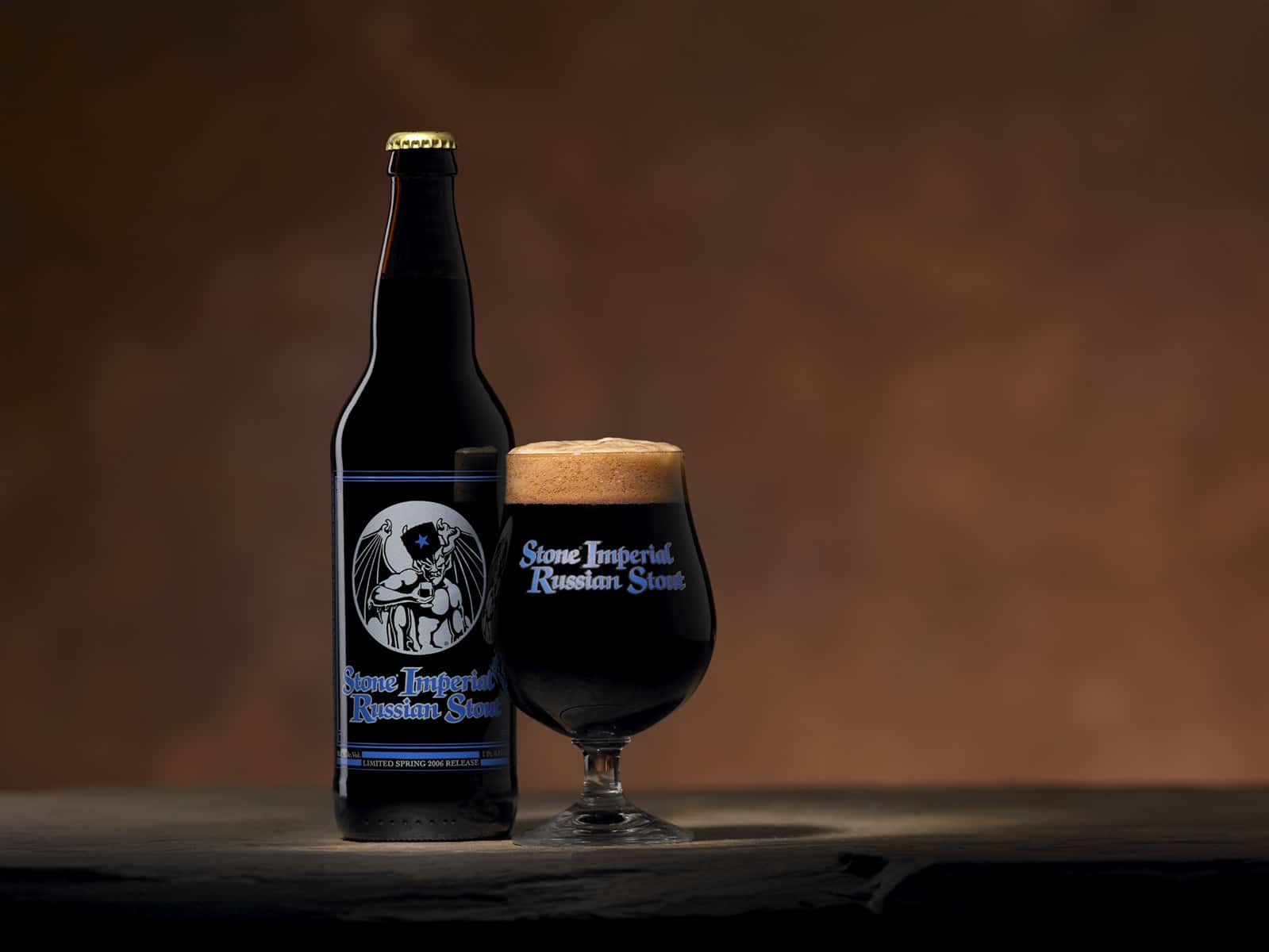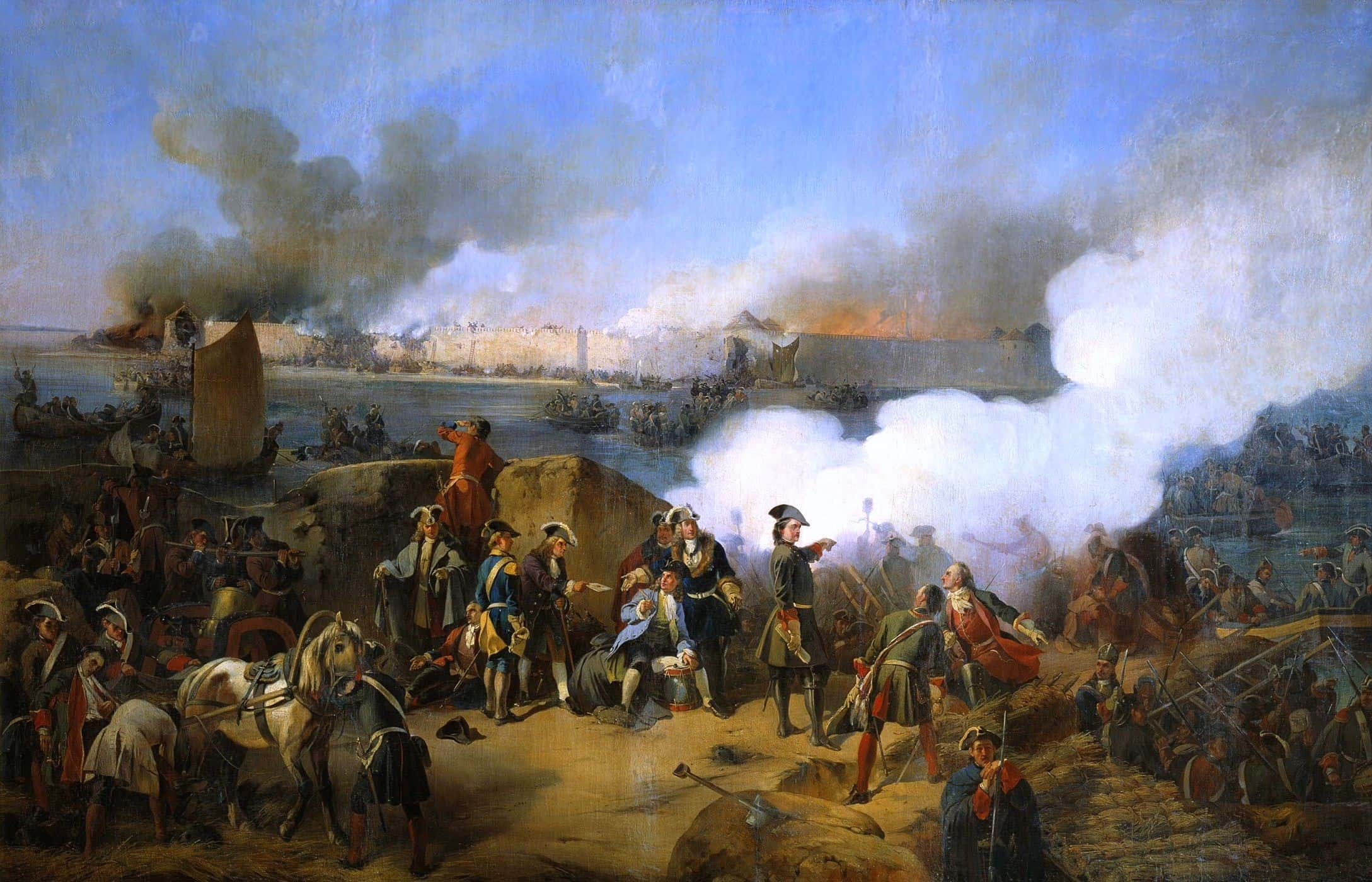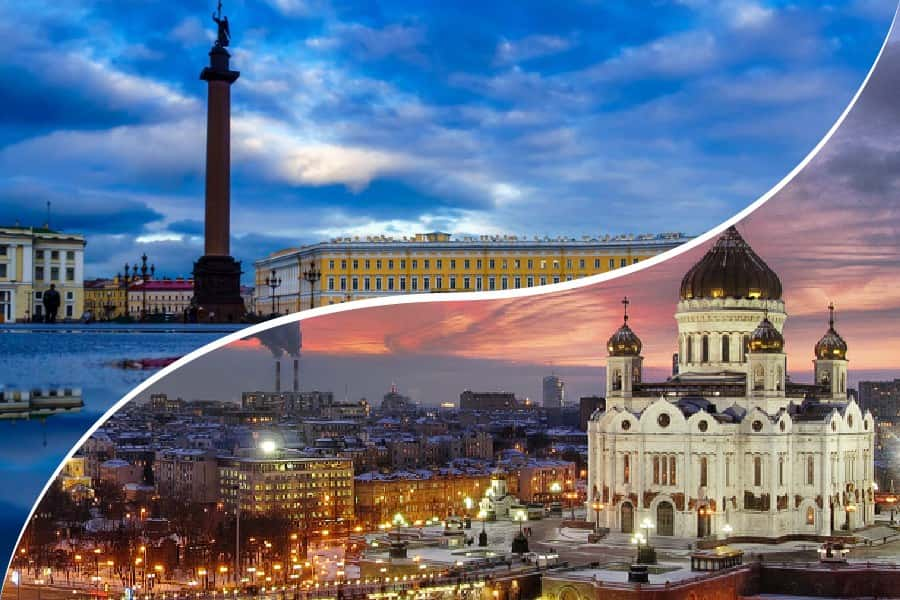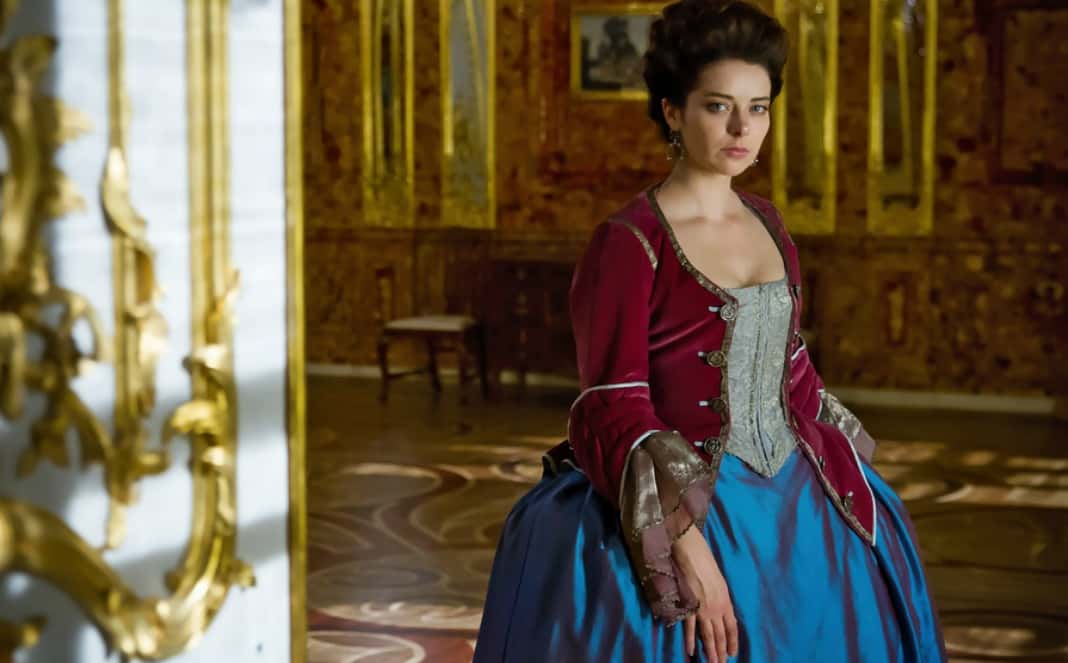“It is my great desire to reform my subjects, and yet I am ashamed to confess that I am unable to reform myself.”—Peter the Great.
Peter the Great of Russia (1672-1725) is a ruler who requires little introduction. Best remembered for transforming Russia into a true empire, the Tsar’s reputation for naval conquest is only bested by his legendary brutality against his own loved ones. Spouses, sons, and siblings (and the friends' ones thereof) were all fair game in Peter’s quest for power. The first “Emperor of All Russia” fought to get where he was, and he would not let a thing like fickle family members get in his way. It’s hard to do it all as a ten-year-old Tsar.
How did Peter get so “Great”? Who bored a peephole in his throne room? And what does his horrible bladder have to do with it all? Read on to learn 43 magnificently shocking facts about Peter the Great, Emperor of All Russia.
Peter The Great Facts
43. New Money
Born in 1672, Peter was just only two generations removed from the founding of the Romanov Dynasty. His grandfather was Michael I of Russia, the first Tsar from the House of Romanov. Hard to imagine an Imperial Russia without those notorious Romanovs, but when Peter was born, the family were relative newbies on the highborn scene.
42. The More the Merrier?
Peter was born to a second marriage. His father, Tsar Alexis I, had three children with his second wife Maria Miloslavskyaya; but in Alexis’s first marriage, he had 13 children, one of which was a little girl named Sophia who would be a complicated scaffold to Peter’s rise to power…
41. Cry Uncle
Peter’s father died when he was only four years old. On 29 January 1676, it was Peter’s uncle, Feodor III, who took the throne. Unfortunately, his reign didn’t last long: Uncle Feodor was sickly and died just six years later in 1682. When would it be time for Peter?
40. Family Feud
Mixed families are complicated, especially when the throne of Russia is involved. After the fall of Peter’s uncle Feodor, the families of his father’s two wives fought each other for the throne. It was the Miloslavskys versus the Naryshkins (the latter being Peter’s family).
39. To Kiss a King
Peter the Great famously broke court protocol during his 1717 visit to France: the 6'8" tall Tsar picked up the child King Louis XV and planted a kiss on his pint-sized host. Peter sought to marry Louis to his daughter, but his plans to unite the Russian and French royal families never came to fruition. The kiss would have to do.
38. Sharing Is Caring
Siblings are no strangers to sharing, even when it comes to the throne of Russia. Peter first came to the throne in 1682 as a ten-year-old co-Tsar with his older half-brother, Ivan. 
37. Big Sister is Watching You
Peter’s older half-sister Sophia served as Regent for most of his early reign. And she ran a very tight ship: Sophia drilled peepholes behind her brothers’ throne, where she would listen into their meetings and also whisper back information responses they were to repeat verbatim. In other words, she was a literal backseat ruler.
36. Who Needs Thrones When You Have Boats
As a youth, Peter didn’t really resist his older sister’s control because he didn’t care for rulership that much. He much preferred his shipbuilding and sailing hobbies, as little boys are wont to prefer over diplomatic meetings.
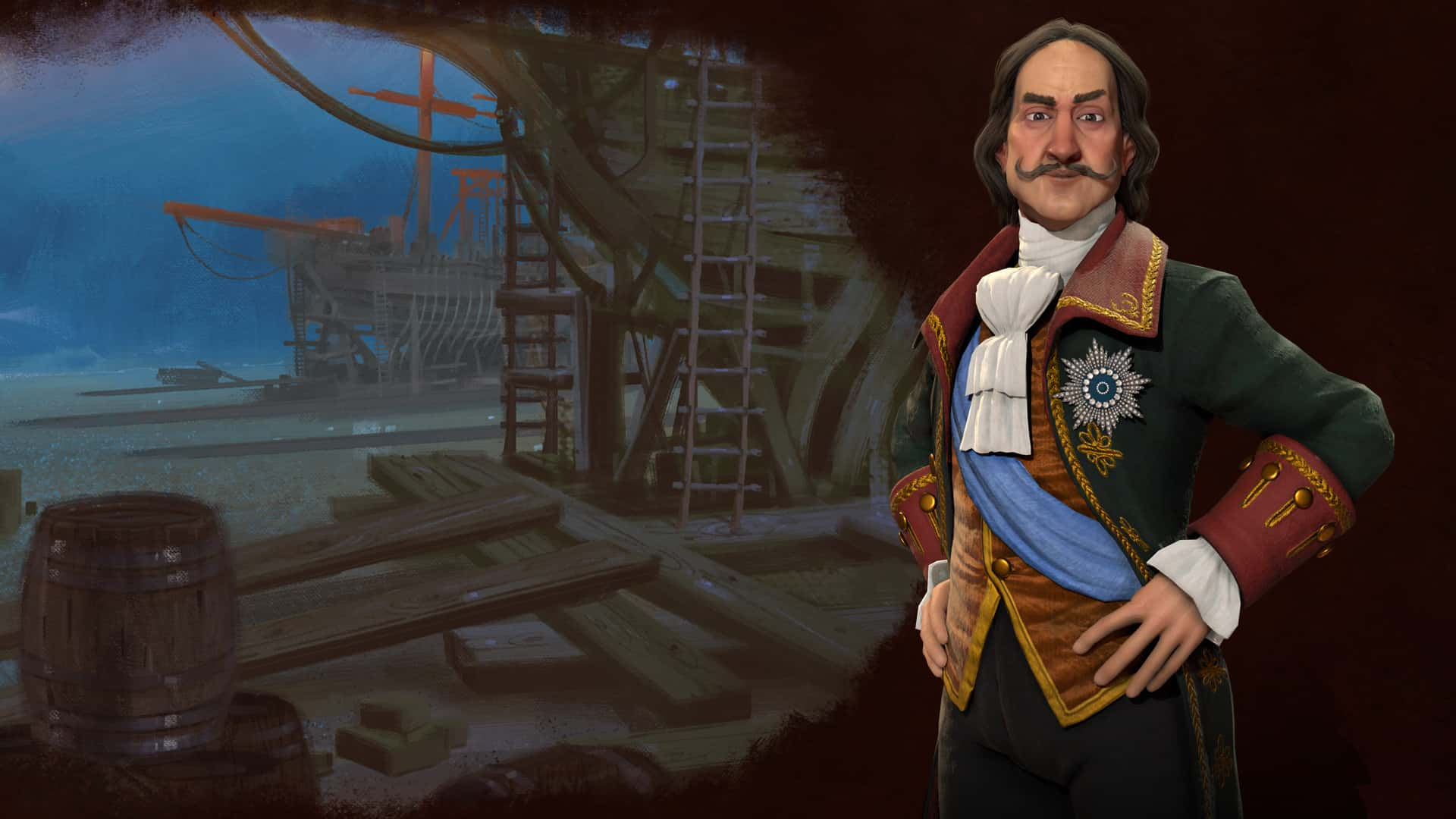
35. Head and Shoulders Above Them All
Even by our standards, Peter was a tall dude. At full height, he stood at 6'8" tall (203cm). This was balanced by oddly small hands and feet.

History's most fascinating stories and darkest secrets, delivered to your inbox daily.
34. We Bet He Didn’t Feel So “Great” the Next Morning
According to legend, Peter the Great’s sojourn to England led to the invention the Russian Imperial Stout beer. The Tsar fell in love with English mead, but he couldn’t take any home with him before it spoiled. To rectify this, an English brewer kept adding more alcohol and hops to make it last longer, thereby creating the hot new beer that’s fit for a Tsar.
33. I Wanna Be Like You
For Peter—and for others—“modernization” meant "like the rest of Europe.” So as an early attempt to modernize the Russian government, Pete ordered all military and court officials to shave their beards and wear “modern” (see: French fashion-inspired) clothing. How did he make everyone shave you might ask? Well, he instituted a beard tax of course! Police were even allowed to forcibly shave men in public if they refused to pay.
32. Sea Me Roar
Peter turned Russia into a real naval power for the first time in its history. With no Russian access to the Baltic, Black or Caspian Seas, Peter set out on his Azov campaigns against the Ottoman Empire in order to gain a foothold in the region (with all the military control it offered). After some failed first steps, it eventually worked. Peter inaugurated the port city of Taganrog in 1698, which became the first military base for the soon-to-be-legendary Russian Navy. Next stop: the world?
31. Master of Disguise
To prepare for his naval conquest against the Ottomans, Peter sent a group of ambassadors across Europe while secretly leading the expedition disguised as a simple carpenter named “Peter Mikhailov.” This initiative would be known as his “Grand Embassy,” which is ironic since it grandly fell on its face: the other relevant European powers were too preoccupied with their own wars to care about Peter’s grudge against the Ottoman Empire. But it wasn’t a total waste: Peter did learn a lot of about shipbuilding and everyday culture across Europe.
30. No Mercy, No Regrets
Peter was notoriously merciless to rebels. Managing to crush all rebellions waged against him during his reign, Peter didn’t settle for exile: he slaughtered mutineers in sadistic ways as a warning to others.
29. No Stopping Me Now
In 1700, Peter started a war with Sweden that lasted 24 years. His victory in this conflict—with a little help from Saxony and Denmark—truly set the stage for his legendary career, and for Russia’s rise as a European power.
28. Big Me in the City
In 1712, Peter moved Russia’s capital city from Moscow to Saint Petersburg (his namesake saint). The city had been founded in 1703 on the westernmost coast of the Baltic Sea to solidify the country’s newfound rights to the waterway.
27. I Called Dibs on First
The year 1712 also marked Russia’s official status as an Empire. As a result, Peter became known as “Peter the Great” and the first Tsar to be known as “Emperor of All Russia.”
 bloggang
bloggang
26. I Do, I Guess
At the behest of his mother, Peter the Great married the daughter of a noble family in 1689, when he was just 17 years old. The bride’s name was Eudoxia Lopukhina, they had three sons, and were by all accounts very unhappily married.
25. Never Gonna Give You Up
Peter disliked his first wife Eudoxia from the start. He soon abandoned her for a Dutch mistress named Anna Mons, but the rejected Eudodixa would still send him letters begging for his nonexistent love.
24. Having Nun of It
In 1698, after nine years of marriage, Peter ended his miserable marriage to Eudoxia Lopukhina and exiled her to a convent (did he have any other moves?). Euddoxia kept busy in seclusion and allegedly took a lover for herself named Stephen Glebov—a man who would later be quartered to death.
23. It’s Now or Never. Oh, You Chose Never…
After his divorce from his first wife, it was believed Peter would marry his longtime mistress, Anna Mons. After all, they had been together for 12 years. However, by 1703, Ana feared Peter was falling out of love with her and therefore sought comfort in the arms of a Prussian ambassador to make Peter jealous. Eventually, the ambassador proposed to Anna and the two did get married. Awkward.
22. Some Way to Cool Off
The Tsar was initially furious to discover his mistress was carrying out her own affair with an ambassador. Even worse: the couple were considering marriage. In a rage, he revoked Anna Mons’s estate and placed not just her, but her mother, sister, and 30 friends under house arrest. Eventually, Peter did cool down enough to let the lovebirds marry in 1711.
21. A Cinderella Story
Peter elevated his peasant-born mistress to the position of his second wife. The couple were secretly married some time in late 1707, but they were officially wed in Saint Petersburg on February 9, 1712. The bride in question, Martha Skavronskaya, changed her name and would become known Catherine I of Russia.
20. Blondes Don’t Have More Fun
Peter’s second wife, Catherine, dyed her hair black to avoid reminding her husband of his previous mistress, Anna Mons. She was a blonde who spurned him and whose family paid the price.
19. He Picked His Side
Peter’s eldest son, Alexei Petrovich, hated his dad’s guts from the start. The Tsarevich was raised by his mother, who happened to be Peter’s deeply mistreated first wife, Eudoxia Lopukhina. As a result, Alexei found it hard to develop paternal bonds with the cause of his mother’s misery.
18. Daddy Issues
Although Tsarevich Alexei Petrovich was Peter’s eldest son, the boy spent most of his adult life thwarting his father’s efforts to mold Alexei into a worthy heir. In fact, after the birth of his own son, the future Peter II, Alexei tried to shirk his inheritance altogether. He asked Peter to pass the throne along and just let Alexei live a private (but luxurious) life with his own lover. Peter would have preferred Alexei be a monk, just to be safe. Needless to say, it did not go well.
17. Where’s Jerry Springer When You Need Him?
The great Tsar put the friends and allies of his son Alexei under "questioning." He even dragged the boy’s mother out of religious sanctuary and charged her with adultery (they had been divorced for some time now, but I guess that doesn’t matter?). Why go to his trouble? Alexei continued to defy his own inheritance, even fleeing to Austria and thereby rebelling against Peter and the Russian government itself.
16. Ideas Spring Eternal
Peter was deeply affected by his 1717 visit to the Palace of Versailles in France. Falling in love with the gardens, he especially loved the Marly machine fountains. Afterward, he gave a palace in Saint Petersburg the name of “Marly,” turning the French fountain into a literal well of inspiration.
15. Ghosts of Son’s Past
After his son’s torturous death (inflicted by daddy dearest himself), Peter’s new heir was his grandson, the future Peter II of Russia. By 1715, Peter the Great had managed to alienate or kill most of his close family members: his older sister, his first wife, and now his late son. Unfortunately, grandson reminded Peter of the disgraced prodigal son Alexei. As a result, the new Tsarevich was educated away from his grandfather and in deep seclusion.
 pinterest
pinterest
14. Secret Sickness
Throughout his life, Peter suffered from distinct facial tics that suggest he had epilepsy. It’s said his favored second wife, Catherine, had a talent for calming down his rages, both epileptic and non-epileptically induced.
13. Started From The Bottom Now They’re Here
Peter expected his soldiers to start at the lowest rank of army service and work their way up. It was how he had been educated, why shouldn’t everyone follow the Tsar’s example?
12. The War at Home
Although Peter favored his second wife, Catherine, the Tsar and his consort had a brief estrangement in the year before his death. William Mons—the sister of Peter’s ex-mistress—and his other sister had been selling their access to Catherine and Peter to bidders. While Catherine liked them both and overlooked this, Peter would not be (under)sold, so he exiled the sister and executed William. In the fallout, Peter and Catherine did not speak to each other for several months.

11. His Cup Floweth Over
While he was never a fully healthy man, the king’s body took a grim turn for the worse in 1723. The following year, he had to get surgery that removed four pounds of blocked urine from his body. Since we’re talking 18th-century surgery, none of that sentence was fun for anybody involved.
10. We Won’t Water This Down for You
In the end, Peter the Great died at the age of 52 on 8 February 1725. Sitting on the throne for 42 years, he left behind a great empire and also a gangrene-infested bladder.
9. Let Me Finish That Thought…
Another legend says that Peter died in the middle of writing his famously incomplete will. Dying of uremia (the kingly death of urine pollution in his blood), it’s said he managed to scrawl “Leave all to…” but then passed out, only having enough energy to summon his daughter.
8. Following in Hubby’s Footsteps
Peter’s wife, Catherine, succeeded him on the throne. The Tsar had died without naming any successor, so Empress Catherine seized power and began to represent the interests of elevated common folk, known as “the new men.” Her popularity led to a coup on her behalf, wherein she was crowned co-ruler of Russia. Unfortunately, she did not enjoy this power long—Catherine outlived Peter by only two years.
7. Less Prayer Books, More War
Under Peter, no Russian male under 50 years old could join a monastery. Peter was big on Russia’s brand-new mega-army, and he felt too much talent was being wasted away on “clerical” jobs. Who needs more monks when there’s an empire to expand?
 Taleworlds Forum
Taleworlds Forum
6. School’s Out for Never
We can partly thank Peter for the modern prevalence of standardized testing in Russia. In 1714, the Tsar made early education, especially in sciences, compulsory for every noble child in Russia. From 10 to 15 years of age, all children of nobles, government clerks, and even lower-ranked elites were to have a basic understanding of math and geometry. At the end of their studies, they would have to pass tests. I’m sure the kids of Russia were thrilled.
5. Best Foot Forward
In 1695, Tsar Peter fought as a foot soldier against the Ottoman Empire. As one of those guys with no chill, Peter believed the Turks could only be defeated in such intimate combat.
 pinterest
pinterest
4. Don’t Mess With This Sis
In spring 1682, Peter’s boyhood battle for the throne violently came to a head when his 25-year-old half-sister Sophia launched a brutal rebellion against his side of the family. The ten-year-old Peter even witnessed some of his own family and friends being murdered in the chaos.
3. I’m a Big Tsar Now
Eventually, Peter got sick of playing second-Tsar to his big sister. At the age of 17, he planned a coup against Sophia that ended in her deposition and exile to a convent. Peter and his other half-sibling, Ivan, however, remained allies and co-Tsars until Ivan’s death. With Peter’s mother’s death in 1694, Peter was 24 and finally ready to rule alone.
2. A Fatherly Touch
In 1715, Peter’s eldest son Alexei died just two days after being sentenced to death. It’s believed the wayward Tsar succumbed to interrogation-related injuries. Attempts had been made to make the Tsarevich “confess” to treason plots against his own father.
1. Baywatch: Tsar Edition
A legend exists that Peter saved a pack of drowning soldiers himself by wading out into waist-deep water. On one hand, this seems exaggerated, because this was dated to when he was near death. On the other hand, this was also dated to a brief period where he seemed to recover enough to go out and inspect his empire. Nevertheless, tale-tellers raise his exposure to the cold water in order to explain the continued (and deadly) bladder problems.










